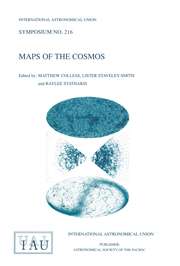No CrossRef data available.
Article contents
Evolution of Gas and Dust in Circumstellar Disks
Published online by Cambridge University Press: 25 May 2016
Abstract
A clear understanding of the chemical processing of matter as it is transferred from a molecular cloud to a planetary system depends heavily on the physical conditions endured by gas and dust as these accrete onto a disk and are incorporated into planetary bodies. Reviewed here are astrophysical observations of circumstellar disks which trace their evolving properties. Accretion disks that are massive enough to produce a solar system like our own are typically larger than 100 AU. This suggests that the chemistry of a large fraction of the infalling material is not radically altered upon contact with a vigorous accretion shock. The mechanisms of accretion onto the star and eventual dispersal are not yet well understood, but timescales for the removal of gas and optically thick dust appear to be a few times 106 yrs. At later times, tenuous “debris disks” of dust remain around stars as old as a few times 108 yrs. Features in the morphology of the latter, such as inner holes, warps, and azimuthal asymmetries, are likely to be the result of the dynamical influence of large planetary bodies. Future observations will enlighten our understanding of chemical evolution and will focus on the search for disks in transition from a viscous accretion stage to one represented by a gas-free assemblage of colliding planetesimals. In the near future, comparative analysis of circumstellar dust and gas properties within a statistically significant sample of young stars at various ages will be possible with instrumentation such as SIRTF and SOFIA. Well-designed surveys will help place solar system analogs in a general context of a diversity of possible pathways for circumstellar evolution, one which encompasses the formation of stellar and brown-dwarf companions as well as planetary systems.
Information
- Type
- Part 7. Circumstellar Disks
- Information
- Copyright
- Copyright © Astronomical Society of the Pacific 2000

